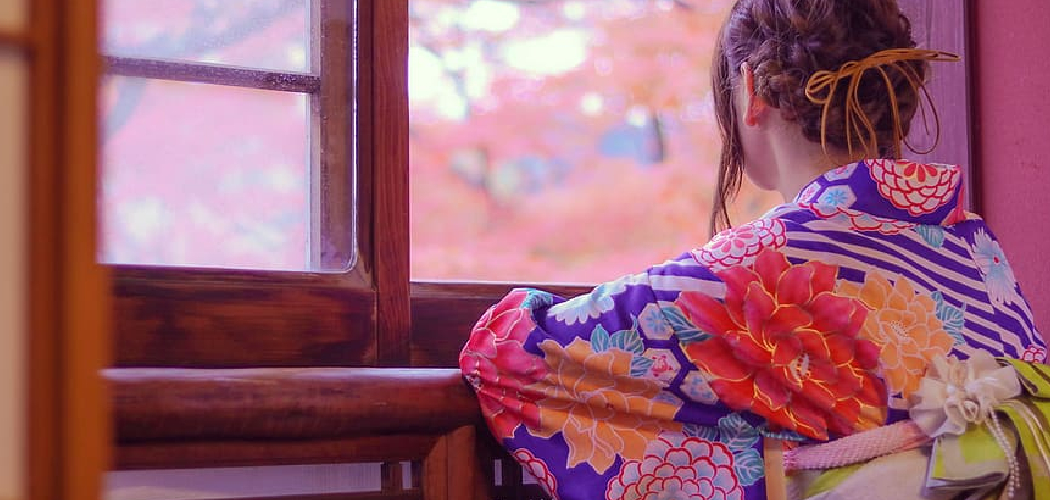Are you looking to discover the centuries-old art of washing a kimono? With the popularity of Japanese culture, taking care of and preserving a kimono has become more important than ever. A good quality kimono can be expensive, which makes it imperative to take proper precautions so that it doesn’t get damaged or spoiled while being washed.
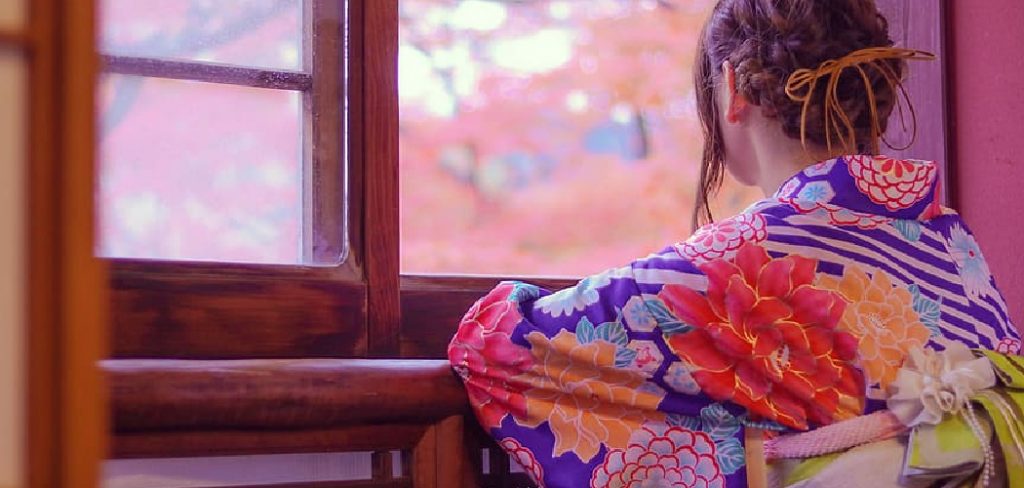
In this blog post, we will walk you through step-by-step instructions for how to wash your beautiful kimonos with ease and efficiency. Learn why using traditional methods is recommended over modern options along with tips and tricks on maximizing its longevity. Whether you’re investing in top-of-the-line fabrics or just curious about what’s involved in caring for them appropriately – grab some detergent, because it’s time to learn how to wash a kimono!
Supplies You Will Need to Wash a Kimono
1. A gently woven mesh bag
2. An area indoors to lay the kimono down
3. Mild detergent (baby shampoo or Woolite is recommended)
4. Plenty of lukewarm water
5. Two large towels, preferably cotton
6. Dry, clean towel
Step-by-step Guidelines on How to Wash a Kimono
Step 1: Check the Material
Kimonos come in a variety of materials, from silk and wool to cotton and polyester. Before washing your kimono, read the label carefully and make sure you know what type of fabric it is made from. This will help you determine how to wash it properly. Checking the material will also help you identify any specific care instructions that may apply.
Step 2: Prepare Your Work Area
Decide on an area indoors where you can lay your kimono down flat. It should have enough space for you to spread out the entire garment without it being bunched or folded. A large table, bed, or clean floor works well for this purpose. Lay down two large towels and place your kimono on top of them to ensure protection from any accidental spills.
Step 3: Fill the Tub with Lukewarm Water
Fill your bathtub or a large sink with lukewarm water. Avoid using hot or cold water, as extreme temperatures can damage delicate fabrics. You can add a small amount of mild detergent to the water and mix well. This will create a gentle cleaning solution that won’t harm your kimono.

Step 4: Place the Kimono in a Mesh Bag
To protect the delicate fabric of your kimono, it’s recommended to place it in a gently woven mesh bag before putting it in the water. This will help prevent any snags or tears while washing. While placing the kimono in the bag, make sure to fold it carefully and avoid any sharp creases.
Step 5: Soak the Kimono
Once your kimono is safely placed inside the mesh bag, it’s time to soak it in the lukewarm water for about 10-15 minutes. This will help loosen any dirt or stains on the fabric. Avoid scrubbing or rubbing the kimono as it can cause damage to the delicate fibers. While Soaking, gently swish the kimono around in the water to ensure even distribution of the detergent.
Step 6: Rinse Thoroughly
After soaking, drain out the soapy water and refill the tub with clean lukewarm water. Carefully take out your kimono from the mesh bag and place it in the tub for a thorough rinse. Repeat this step until the water runs clear, indicating that all the detergent has been washed away. If you notice any remaining dirt or stains, you may need to repeat the soaking process.
Step 7: Remove Excess Water
Once your kimono has been thoroughly rinsed, gently squeeze out any excess water from the fabric. Do not wring or twist the garment as this can cause damage. Instead, place it on a dry towel and roll it up to remove excess water. Removing excess water will help speed up the drying process and prevent damage to the fabric.
Step 8: Lay Flat to Dry
Lay out a clean, dry towel and place your kimono on top of it. Gently spread out the fabric and smooth any wrinkles or creases with your hands. Then, carefully roll up the towel and press down gently to remove any remaining moisture from the kimono. Once done, lay it flat on a dry, clean towel until it completely dries.
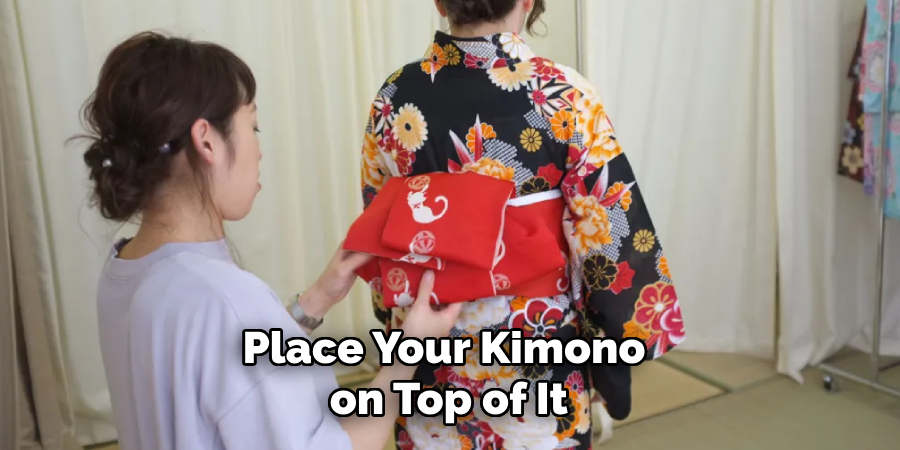
Following these simple steps will ensure that your kimono stays clean and well-maintained for years to come. Remember, it’s essential to use gentle cleaning methods and take proper care of your kimonos to preserve their beauty and longevity. So next time you’re ready to wash your kimono, follow this guide for the perfect outcome! Happy washing!
Additional Tips and Tricks to Wash a Kimono
1. When it comes to washing a kimono, using the right detergent is crucial. Avoid harsh detergents or bleach, as they can damage the delicate fabric and intricate designs of your kimono. Instead, opt for a mild detergent specifically designed for delicate fabrics.
2. If you are unsure about the type of fabric your kimono is made of, it’s always best to err on the side of caution and hand wash it instead of using a washing machine. This will help prevent any potential damage to your garment.
3. When hand washing a kimono, it’s important to avoid wringing or twisting the fabric as this can cause wrinkles and damage the delicate fibers. Instead, gently squeeze out excess water and lay it flat on a clean towel to dry.
4. If your kimono has any stubborn stains, it’s best to spot-treat them before washing the entire garment. Use a gentle stain remover and carefully follow the instructions to prevent any damage to the fabric.
5. To keep your kimono looking pristine, it’s important to dry it in a well-ventilated area away from direct sunlight. Direct sunlight can cause fading and discoloration of the fabric, so always make sure to choose a shaded spot for drying.
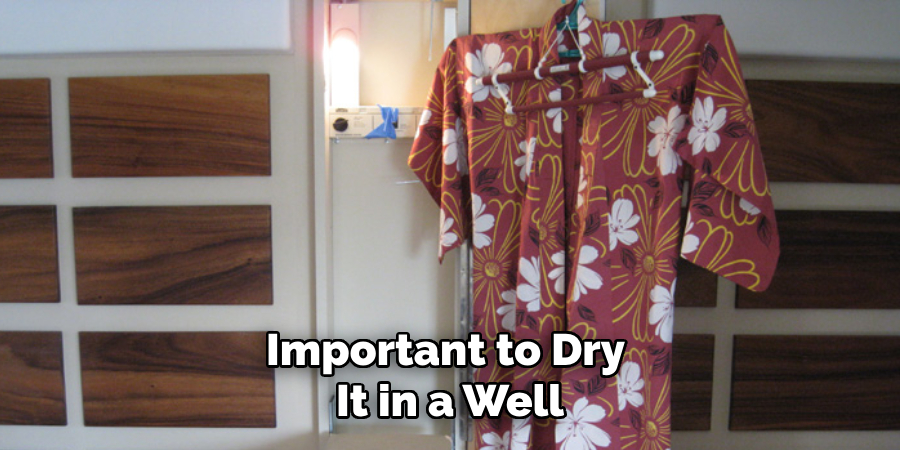
By following these additional tips and tricks, you can ensure that your kimono stays clean and in excellent condition for years to come. Remember, proper care and handling of a kimono is essential to maintain its beauty and longevity. So take your time, be gentle, and give your precious garment the attention it deserves when washing it. Happy cleaning!
Precautions Need to Be Followed for Washing a Kimono
There are a few important precautions that need to be followed when washing a kimono, in order to ensure it is properly cleaned and preserved. Here are some key points to keep in mind:
1. When washing a kimono, always use cold water instead of hot water. Hot water can cause the fabric of the kimono to shrink or become damaged.
2. It is recommended to hand wash a kimono instead of using a washing machine, as the delicate fabric can easily get damaged in a washing machine.
3. Before washing, make sure to remove any accessories or decorative elements that are attached to the kimono, such as obi belts or kanzashi hair ornaments. These items should be washed separately if needed.
4. Use a mild detergent specifically designed for delicate fabrics, and avoid using harsh chemicals or bleach.
5. Gently swirl the kimono in the water, being careful not to wring or twist it as this can cause damage to the fabric.
6. After washing, rinse the kimono thoroughly with cold water until all soap residue is removed.
7. Do not hang the kimono to dry, as this can cause stretching and distortion of the fabric. Instead, lay it flat on a towel or drying rack to air dry.
8. If possible, avoid exposing the kimono to direct sunlight when drying, as this can cause fading and discoloration.
Following these precautions will help ensure that your kimono is properly washed and preserved for many years to come. It is important to take proper care of this traditional garment, as it holds cultural and historical significance in Japanese culture. So, it’s essential to handle a kimono with care while washing.
Frequently Asked Questions
Can I Wash My Kimono in a Washing Machine?
No, it is not recommended to wash a kimono in a washing machine as the delicate fabric can easily get damaged. It is best to hand-wash your kimono using a gentle detergent and lukewarm water.
How Often Should I Wash My Kimono?
It is recommended to only wash your kimono when it becomes visibly dirty or after heavy use. Overwashing can cause the fabric to lose its luster and shape. For regular use, washing once every few months should be sufficient.
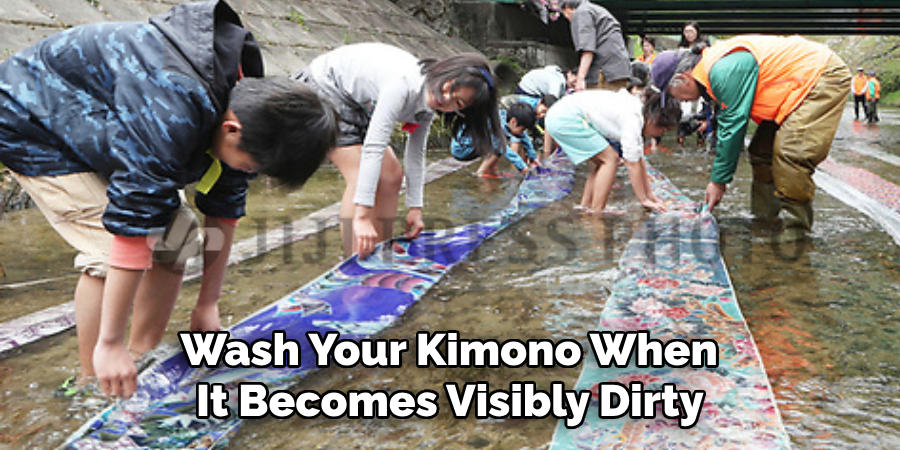
Can I Use Regular Detergent to Wash My Kimono?
No, it is important to use a gentle detergent specifically designed for delicate fabrics when washing your kimono. Harsh detergents can cause damage and discoloration to the fabric.
What Should I Do if My Kimono Gets Stained?
If your kimono gets stained, it is best to take it to a professional cleaner immediately. Do not attempt to remove the stain yourself as this can cause further damage.
How Should I Dry My Kimono?
After hand-washing your kimono, gently squeeze out excess water and lay it flat on a clean towel to dry. Avoid wringing or twisting the fabric as this can cause wrinkles and damage. It is also important to avoid direct sunlight when drying your kimono.
Can I Iron My Kimono?
Yes, you can iron your kimono using a low-heat setting. It is recommended to use a pressing cloth or towel between the iron and the fabric to prevent any damage. Do not use steam while ironing as this can cause shrinkage and distortion of the fabric.
Conclusion
With the above outlined you can easily learn how to wash a kimono and maintain it in good condition for years to come. Remember to always treat your kimono with care and follow the proper methods for washing, drying, and ironing to ensure its longevity. If you have any further questions or concerns, do not hesitate to consult a professional cleaner for advice. Happy washing!
